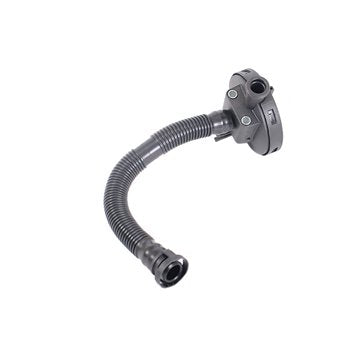Reduce maintenance costs with a well-built clp engine.
Reduce maintenance costs with a well-built clp engine.
Blog Article
Exactly How a Clp Engine Can Enhance Efficiency in Different Industries
The advent of CLP engines marks a significant change in operational effectiveness across different sectors, driven by their ability to maximize gas intake and reduce downtime. As organizations increasingly prioritize sustainability together with performance, the duty of CLP engines becomes also more vital.
Overview of CLP Engines
CLP engines, or Constant Liquid Propellant engines, stand for a considerable development in propulsion innovation, particularly for room applications. These engines use a constant feed system that permits the sustained expulsion of propellant, resulting in improved effectiveness and performance contrasted to conventional solid or hybrid propulsion systems. By preserving a constant circulation of liquid propellant, CLP engines can attain a lot more accurate thrust control, which is crucial for steering spacecraft in various goal scenarios.
The style of CLP engines integrates sophisticated products and ingenious fuel management systems. clp engine. This results in minimized weight and increased integrity, crucial aspects for long-duration space goals. Additionally, the continual procedure decreases the threat of combustion instability, a typical obstacle in standard rocket engines.

Benefits in Manufacturing
The manufacturing of Continual Fluid Propellant (CLP) engines presents numerous remarkable benefits that boost both efficiency and cost-effectiveness. One of the key benefits is the structured production procedure, which decreases the complexity connected with conventional propulsion systems. By using fluid propellant, manufacturers can attain better precision in engine efficiency, leading to optimized energy result and decreased waste.
Additionally, CLP engines facilitate a greater level of modularity, permitting less complicated assimilation right into numerous production lines. This versatility can substantially reduce preparations and enhance overall functional flexibility. The use of CLP technology additionally often tends to lessen the requirement for considerable upkeep as a result of less moving parts, which converts right into reduced downtime and functional prices.

Applications in Logistics
Leveraging Constant Liquid Propellant (CLP) engines in logistics uses substantial benefits in operational performance and reliability. These engines supply a robust remedy for various transportation needs, enabling the smooth movement of items throughout large ranges. my blog The intrinsic layout of CLP engines enables consistent power outcome, which equates right into smoother and much more foreseeable transport schedules.
One of the crucial applications of CLP engines in logistics is in durable freight transportation, where they can drive both ground and airborne automobiles. Their ability to preserve high performance under varying load conditions ensures that delivery timelines are satisfied, thereby improving client fulfillment. Furthermore, CLP engines can be incorporated into automated logistics systems, assisting in real-time monitoring and maximizing route planning.
Moreover, the longevity of CLP engines lowers upkeep downtime, permitting logistics firms to maximize their operational capacities. This is especially valuable in warehousing operations, where effectiveness in taking care of and transferring products is vital. As logistics remains to evolve, the integration of CLP engines represents a forward-thinking technique that not just improves performance but likewise supports the industry's growing needs for reliability and speed.
Influence On Power Performance
How do Continual Liquid Propellant (CLP) engines enhance energy effectiveness in transportation? CLP engines use a consistent flow of liquid fuel, maximizing combustion processes and maintaining a steady thrust result. This layout minimizes energy losses related to typical burning engines, where fuel shipment can vary and lead to ineffectiveness.
The constant procedure of CLP engines enables a more efficient thermal cycle, resulting in higher details impulse compared to standard engines. clp engine. This equates to decreased fuel intake for the exact same amount of job done, significantly lowering functional expenses throughout various transportation fields, including aviation and maritime sectors
Additionally, the capability of CLP engines to maintain ideal performance under differing tons conditions reduces the need for constant velocity and deceleration, even more improving fuel effectiveness. Enhanced power efficiency not just adds to set you Learn More Here back financial savings yet likewise causes reduce greenhouse gas exhausts, aligning with worldwide sustainability goals.
Future Trends and Innovations
Arising improvements in Constant Liquid Propellant (CLP) engine innovation guarantee to transform the landscape of transport efficiency and sustainability. As industries pivot toward greener options, CLP engines stand at the leading edge, integrating cutting-edge products and design methodologies that boost performance while reducing environmental impact.
Among the most appealing patterns is the fostering of hybrid systems that combine CLP engines with renewable energy sources. This synergy can maximize gas intake and lower exhausts, lining up top article with international sustainability objectives. Advancements in computational fluid dynamics (CFD) are promoting the style of more aerodynamically efficient engines, leading to reduced drag and enhanced gas effectiveness.
Furthermore, the development of smart surveillance systems is established to enhance functional performances. These systems leverage information analytics and IoT innovation to maximize engine performance in real-time, guaranteeing that the engines operate within their most effective parameters.
As research remains to explore alternate propellant solutions-- such as biofuels and synthetic fuels-- the future of CLP engines looks appealing. By taking advantage of these developments, markets can not only improve their efficiency however additionally add considerably to a cleaner, extra lasting future in transportation.
Verdict
To conclude, CLP engines represent a substantial development in performance across numerous sectors. Their capability to optimize fuel usage and decrease functional expenses, combined with a constant feed system, boosts power outcome and functional dependability. The assimilation of sophisticated materials and fewer relocating parts reduces maintenance demands, while positioning with sustainability goals placements CLP engines as an essential technology for the future. Continued advancement in this area guarantees additional enhancements in performance and environmental efficiency.
Report this page